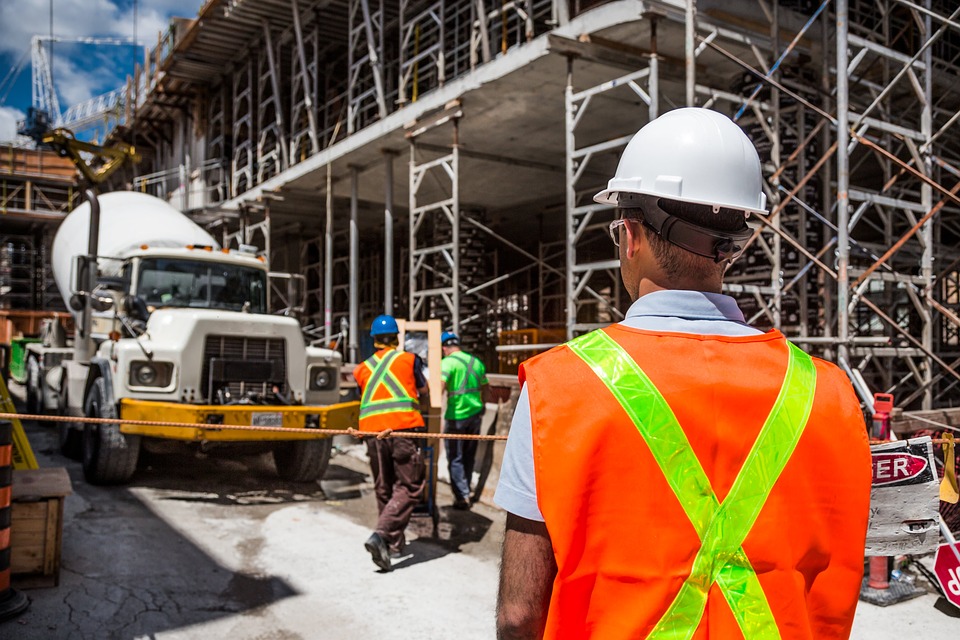Keeping an Eye on Construction’s “Fatal Four”
“The leading causes of private sector worker deaths (excluding highway collisions) in the construction industry were falls, followed by struck by object, electrocution, and caught-in/between. Eliminating the Fatal Four would save 602 workers’ lives in America every year.” https://www.osha.gov/oshstats/commonstats.html
Maintaining a safe working environment, and avoiding workplace accidents, requires constant monitoring. Recognizing and identifying potential hazards and addressing them proactively is essential. Drones provide a unique solution, not only in routine periodic inspections, but also for the non-routine situations that are bound to happen.
Drones can create a safer environment for construction workers. Drone technology offers an unmatched level of versatility that, when used correctly, lowers the risk of worker injury.
Reduce or Eliminate the Need for Manual Building Inspections
In a previous blog post, we discussed how drones are used to conduct building inspections. Federal and state laws require construction companies to conduct building inspections for safety and code compliance. In the past, construction companies conducted these inspections manually. With drones construction companies can now conduct external building inspections by drone. The drone provides, and records, a detailed picture of the building’s structure, revealing possible hazards or other quality control issues. Drones provide a safer and more efficient way to conduct building inspections, and the savings over a manual inspection, in time and labor, can be substantial.
Identify Potential Hazards
Drones can identify potential hazards at construction worksites. Employers and overseers can fly drones above and around their worksites to look for potential hazards that may cause injury. Unsecured loads that could shift or fall, improper use of ladders (one of OSHA’s most frequently cited safety issues), and other hazards can be identified and remedied to ensure compliance with OSHA’s standards.
Ensure Use of Personal Protective Equipment
Drones can be used to ensure that construction workers are wearing the appropriate personal protective equipment (PPE). As explained on the official OSHA website, employers are required by law to provide workers with the right PPE for the job, as well as train workers on how to use it. Different jobs require different types of PPE. In the construction industry, commonly used PPE includes hard hats, impact-resistant eyewear, fall restraint harnesses, gloves, dust mask and reflective vest. Unfortunately, it’s difficult, if not impossible, to keep an eye on all workers from the ground. Drones enable employers and overseers to easily watch their workers, ensuring that they are wearing the appropriate PPE for the job.
Maintenance Inspections of Bridges and Towers
The Centers for Disease Control and Prevention (CDC) specifically mentions maintenance inspections of bridges and towers as being one of the ways in which drones are used to create a safer construction industry. So, how does this reduce the risk of worker injury? By using drones to conduct these maintenance inspections, construction companies don’t have to use workers to perform the inspections. Scaling a bridge or tower poses a risk of serious injury to workers — a risk that’s easily avoided through the use of drones.
Monitor Environmental Factors
Finally, drones can be used to monitor environmental factors at construction worksites. When workers are 100 feet above the ground on scaffolding, and the weather or other environmental hazards manifest, it creates a dangerous scenario that needs immediate attention. Drones can provide a better picture of the surrounding environment and empower employers to make informed decisions.
These are just a few of the many ways in which drones promote a safer construction industry.
FAA Regulations for Drone Use
It’s important to note that not just anyone can pilot a drone. The U.S. Federal Aviation Administration (FAA) has certain rules governing the use of drones for commercial purposes, including construction. Pilots, for instance, must first pass a test to obtain their pilot certificate with a small UAS rating. Additionally, the drone being piloted must weigh less than 55 pounds and remain in direct light of sight, either by the pilot or a separate observer. While some construction employers may attempt to pilot their own drones, it’s usually a better idea to leave this task in the hands of a professional. They have the skills, tools and experience needed to pilot drones in a safe and effective manner.

